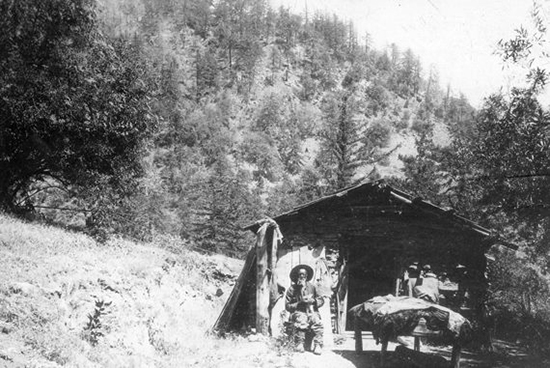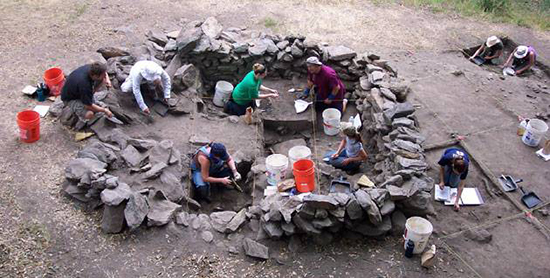@state May 2017 - Nate Harrison
Seth Mallios Q&A

What does your research of Nate Harrison add to the narrative of San Diego history and why do you think it’s important for San Diegans to learn about him?
There are stories about Nate Harrison at just about every major California event in the 19th century. People claimed that he fought with Fremont’s battalion in the Spanish-American War, claimed that he drove the first ox wagon over Tejon Pass to open up Los Angeles to the Central Valley...he’s the Forrest Gump of California history.
One of the things we get to do in archaeological history, based on the artifacts and what we’ve found, is ask the questions: ‘when did he first get to the mountain and what was he doing there?’ That’s the first and most important thing. Sifting through all of the fiction to find the things that have some support archaeologically.
The second thing is to get at the notion of the stories. Some get passed on and some get forgotten. Instead of discounting the false stories, we can ask ourselves, ‘Why did so many people believe that story, why did they want to believe it? What is it in the legends that makes us hear that story and immediately want to tell it to someone?’
Do you have a favorite “tall tale” from Nate Harrison’s past?
There’s a story that Nate Harrison escaped at a slave auction, hopping onto a raft and drifting down the Mississippi River. I love it so much because it’s right out of Mark Twain’s Huckleberry Finn; this is how Jim gets away. We have yet another fabled story that’s not true, but the fiction that it’s based on is also a fake story. With the other stories, at least Fremont’s battalion did fight in San Diego, but this is two layers of fiction and that’s what really pulls me in, just the tall tale upon tall tale. What’s worth emphasizing is that Nate was a good storyteller too, so he contributed to this...he loved a good yarn and loved to pull people’s legs.

Can you tell me a little about how technology has changed the study of Anthropology since you first began your career?
When I started this, there was no cloud. We never thought of uploading everything as a storehouse, as an archive. Now we have this way to go beyond just presenting the story we want people to read. We can present all of these stories out there as well as the ones that are most reliable. We even had a drone at [the cabin] site on the last day of digging. Now there’s video footage captured of things I never thought I’d see possible - seeing the whole mountain from above, being able to zoom in on the site and capturing the drive with video.
We’re starting to partner with groups who can do ground penetrating radar, which ends up being a new frontier for finding what’s in the ground before we even dig. Now we can do 3D photography so someone can look at an artifact on the web and spin it around and see all of the sides. We used to take pretty pictures, but now you can take measurements through the photographs and there are great applications for GIS (Geographic Information Systems). We are so thrilled to be able to share all of these results! Archaeology has a history of digging and not writing things up or making things accessible. We get great pride in writing reports that are now accessible to everyone.
What’s unique about SDSU’s Anthropology program?
We focus on being an applied program and giving people practical applications of Anthropology. The number one thing is that people graduating with this major can get jobs in archaeology. There’s so much development in San Diego that there are companies that need to employ archaeologists to survey the land before the development takes place. In fact, most of the 50 firms in the region that do this kind of work were either started by or employ our students and this has been going on for three decades. There’s a great pipeline. When I was an Anthro major many years ago, there was always that concern of ‘How am I going to use this degree?’. It’s very rewarding to meet the parents at graduation and to let them know their students can get a job immediately. It’s not a worry of what they’re going to do with this degree.
Is there anything else you’d like students and the general public to know about the Nate Harrison digs through SDSU’s Anthropology program?
The students do all the digging. There are some digs where you spend most of the time in the classroom, as strange as it sounds, and some digs where all you do is supervise and fill out paperwork. Here, the students do all the digging, screening, and paperwork. Back in the lab, they do all of the cleaning of the artifacts and the gluing. That’s where this is really authentic; you are hands-on in every aspect of it. The other thing I would say is that archaeological field schools are disappearing all over the nation. They’re expensive to run and very time consuming. If you have an opportunity to take one, take it now. This is not something I can guarantee we’ll be offering next year or the year after. They’re a fantastic experience that’s worth seizing.
